
1. Introduction
| CPU | 486 DX2 55MHz |
| RAM | 16MB |
| Video | WD90C30-LR VGA 1MB |
| Sound | MediaVision Pro Audio Spectrum (ISA) |
| Network | 3com 3c509b-C (ISA) |
| Hard Disk | 2GB CompactFlash |
| Floppy | Gotek floppy emulator |
| Ports | 2xPS/2, 2xRS-232/DE-9, VGA/DE-15, Parallel/DB-25, Ethernet/RJ-45/BNC/AUI |
This information pertains to a particular specimen and may reflect upgrades, repairs, modifications, or factory options not present by default.
The Tandy 4850 EP is a somewhat rarer Tandy model. It adheres to the standards of its day more closely than the earlier Tandy 1000 series, eschewing Tandy graphics and sound and Deskmate in favor of VGA and Windows.
This unit came into our possession with a Pro Audio Spectrum 16 sound card, as well as Windows 95. This ran fairly well on the 486 DX2 55MHz CPU, albeit stuck in 256 colors with the built-in Western Digital video chip. It does seem that the video RAM was upgraded to 1MB at some point (SW1P6 is set to OFF per Tandy faxback 01013).
During our stewardship of the machine, we have replaced the original floppy with a Gotek floppy emulator and upgraded the accompanying Sony external CD-ROM drive to an internal 52X IDE unit.
2. Resource Assignments
The following were gathered from Windows 95's Device Manager, and may be incomplete. Only I/O addresses from 0x200-0x3ff were considered. The video card should, in theory use IRQ 9, but Windows's configuration did not reflect this.
| IRQ | Peripheral |
|---|---|
| 0 | System Timer |
| 1 | Keyboard |
| 2 | APIC |
| 3 | COM2 |
| 4 | COM1 |
| 6 | Floppy Controller |
| 8 | RTC |
| 10 | 3c509b |
| 12 | Mouse |
| 13 | FPU |
| 14 | IDE Controller |
| 15 | Pro Audio Spectrum |
| DMA Channel | Peripheral |
|---|---|
| 2 | Floppy Controller |
| 4 | DMA Controller |
| 7 | Pro Audio Spectrum |
| I/O Port | Peripheral |
|---|---|
| 0x201 | Pro Audio Spectrum |
| 0x2f8 | COM2 |
| 0x300 | 3c509b |
| 0x3f2 | Floppy Controller |
| 0x388 | Pro Audio Spectrum |
| 0x3bc | Parallel Port |
| 0x3f8 | COM1 |
3. BIOS Images
Unlike earlier Tandy computers, the 4850 EP does not have an operating system or file system in ROM. It uses the Phoenix BIOS and, fortunately, it does have the setup utility in ROM. The BIOS is limited to a maximum hard disk size of 512 MB, but this can be worked around with disk extender software. Here are the Tandy 4850 EP BIOS images.
4. Inside Pictures
In the interest of completeness and in no particular order, here are the insides of the Tandy 4850 EP. Please hover your mouse cursor over each picture for a brief description of the image.
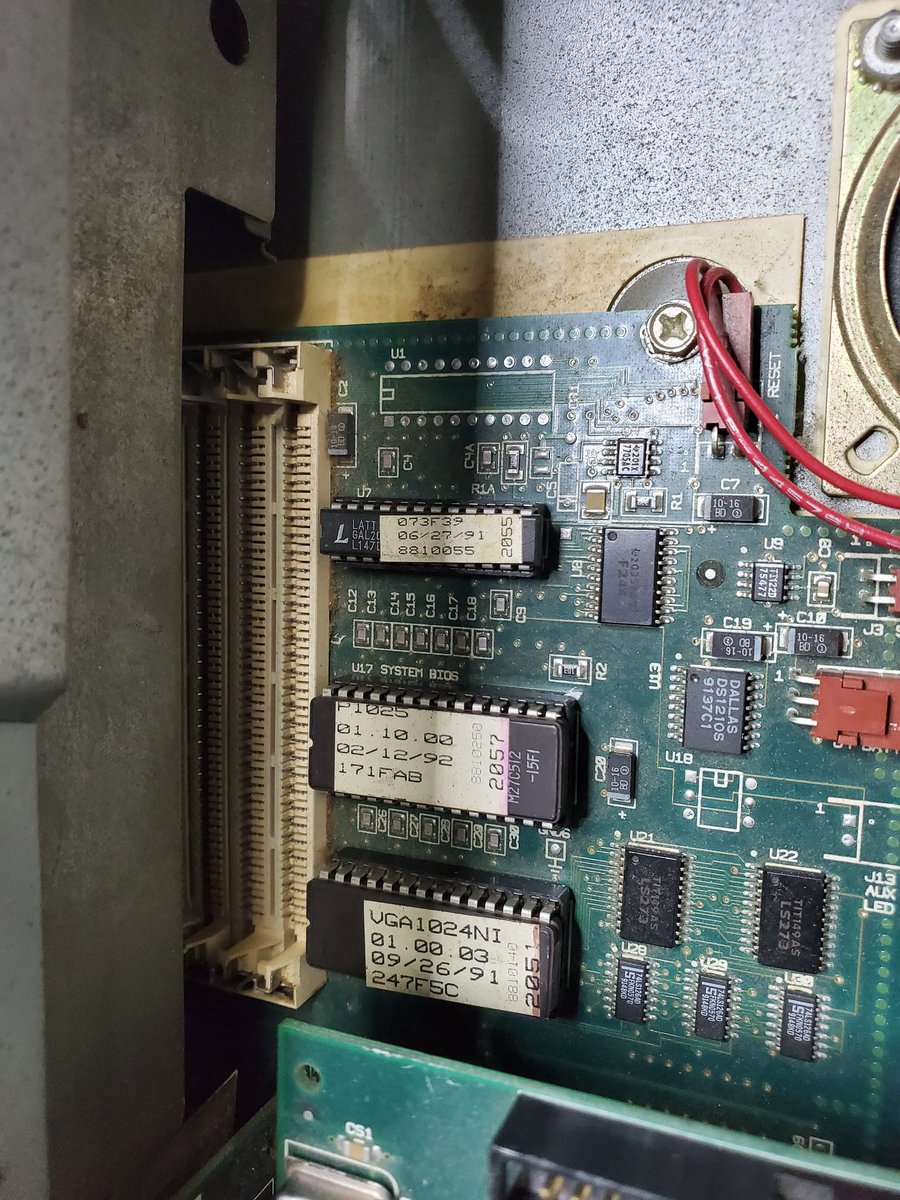
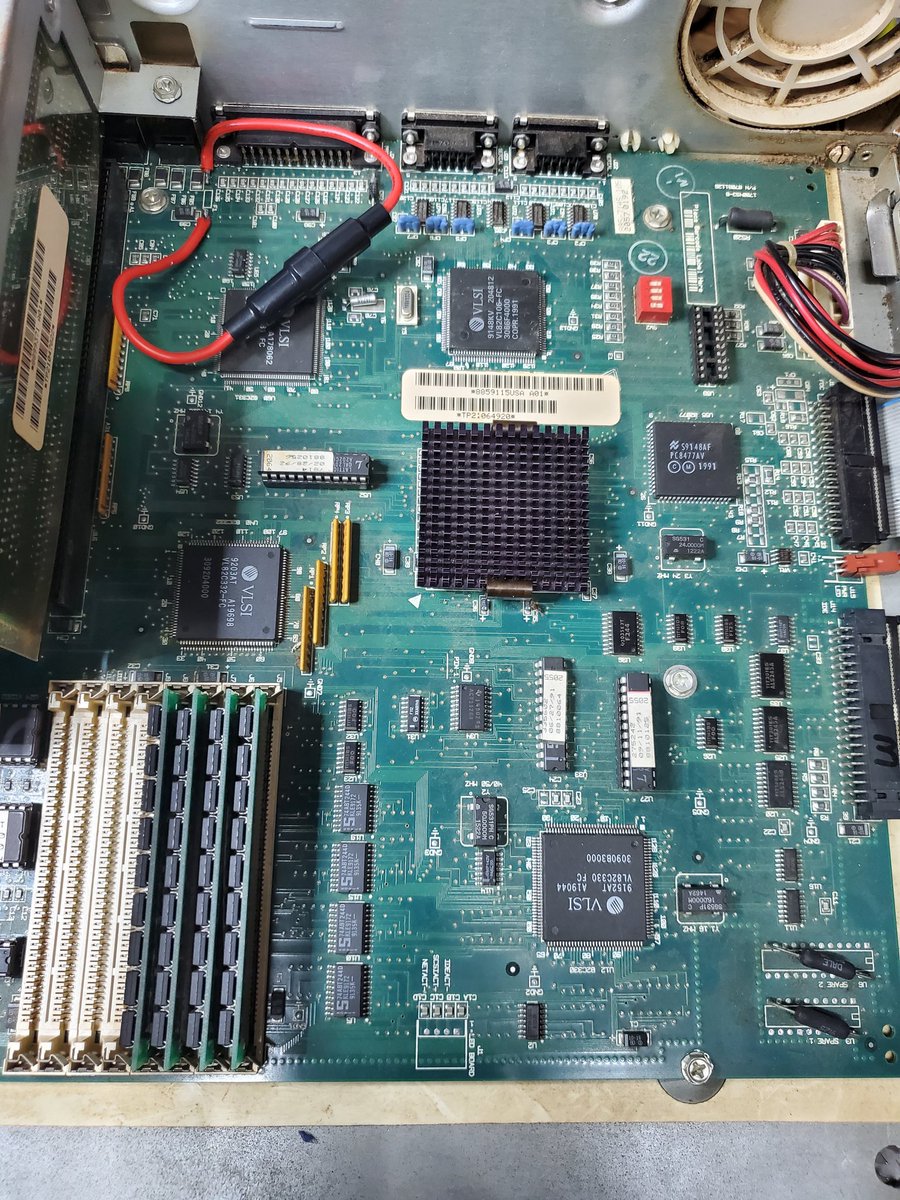
5. Keyboard Fuse Replacement
The large fuse holder of questionable efficacy in the motherboard picture in the previous section is not the original keyboard fuse. The original looked like this:
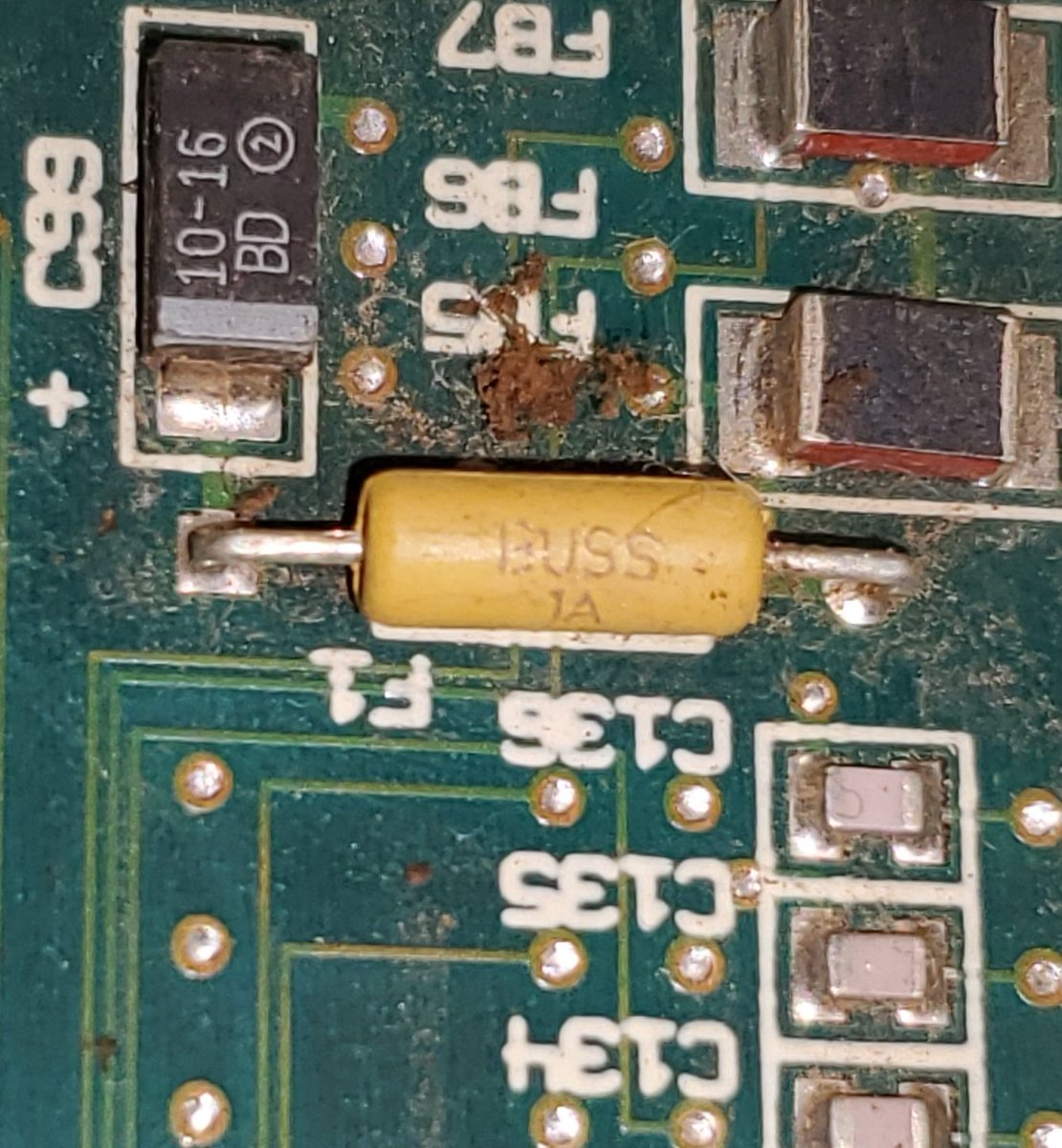
Unfortunately, the original fuse blew at some point during the last 20 years or so. This is why you should always turn the computer off and ground yourself before attaching a PS/2-style keyboard!
While the questionable idea of using a generic fuse holder and fuse of similar specs that we had lying around was ours, the idea to check the fuse because the PC was acting like no keyboard was attached came from Adam Brisebois (thanks, Adam!)
6. XT-IDE Universal BIOS and Large Drives
The Tandy 4850 EP has a 512MB disk size limitation in its BIOS. Previously, this was worked around using Dynamic Drive Overlay software. In this case, it also has a 3Com 3c509b-C Ethernet ISA card with a free boot ROM socket. This afforded us the opportunity to avoid DDO software altogether by using the latest version of the XT-IDE Universal BIOS (r625 at the time of this writing).
6 - 1. Procedure
- 3c509b Configuration
- This was done on the Tandy with the 3c509b installed, using 3C5X9CFG.EXE from the EtherDisk 6.1 collection. Most of the defaults were kept, but the boot ROM size was set to 16KB (even though our physical ROM was 64KB, see the section on flashing, below). We were also forced to disable Plug-and-Play support by Windows issues (see Troubleshooting, below).
- XT-IDE Configuration
- With some experimentation, we found the optimal settings to be those indicated in the images below. Configuration was performed in DOSBox on our host PC using XTIDECFG.COM and written to IDE_386L.BIN
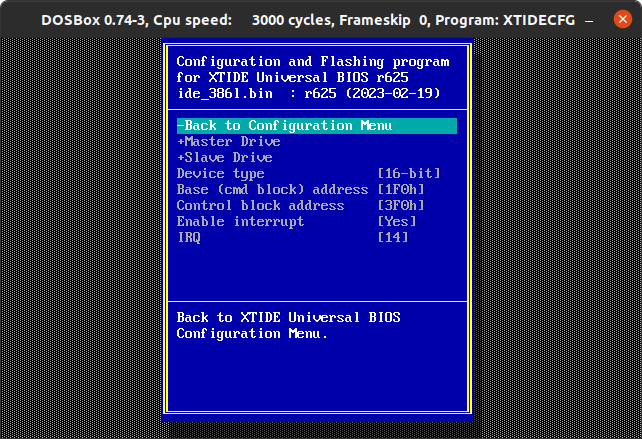
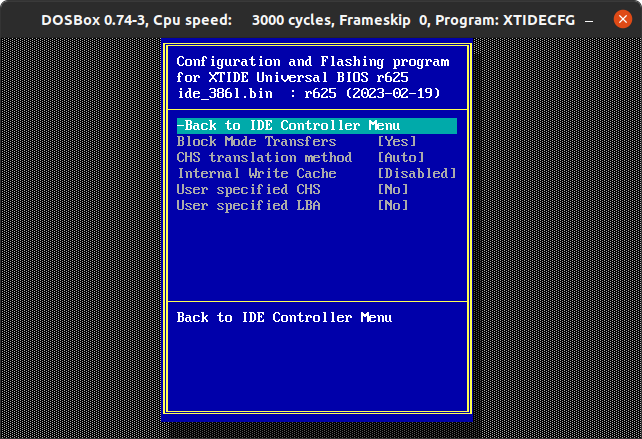
- XT-IDE Flashing
- Before flashing, it was necessary to pad the ROM using ROMPAD. The 3c509b was configured for a 16KB ROM, the actual physical ROM chip we were using was 64KB, and the ROM file was 12KB, so the command we used was ./rompad ide_386l.bin ide_pad.bin 16 64. We then burned this to our ROM chip using a TL866 and the minipro package.
6 - 2. Troubleshooting
With the XT-IDE BIOS in place, we installed DOS 6, Windows 3.1 (in C:\WIN31 and Windows 95 (in C:\WIN95. After the first couple reboots for setup, subsequent boots tended to fail with a Windows Protection Error.
We suspected the XT-IDE BIOS, but a logged boot (available from the F8 menu) showed that the boot was failing after the 3c509b driver was loading. Disabling the 3c509b driver allowed Windows to boot. Finding another network driver would be a pain, so we first tried the drivers from the 3com EtherDisk, with the same result. Finally, we disabled PnP mode using the 3C5X9CFG.EXE utility and installed the driver using the Windows 95 "detect hardware" option.
This worked, and now we have consistent booting with network access!
7. Future Plans
- SCSI HBA with PiSCSI for hard disk/CD-ROM emulation.